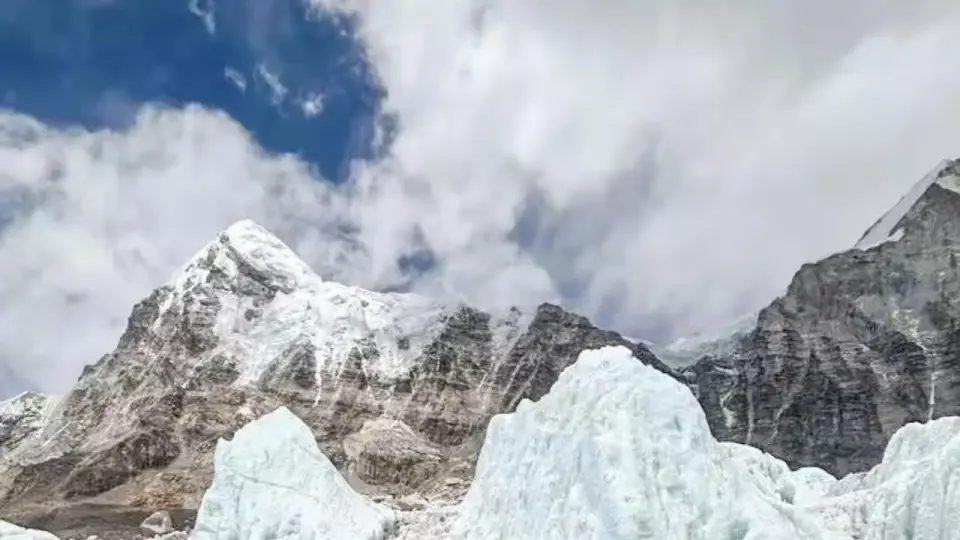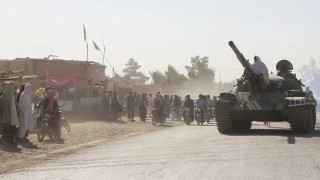
Deadly snowstorm strikes Mount Everest slopes, one climber killed as 137 rescued in dramatic operation (File Image)
Deadly snowstorm strikes Mount Everest slopes: Mount Everest witnessed another tragic event as a 41-year-old climber lost his life during a snowstorm on the Tibetan slopes. Officials confirmed hypothermia and altitude sickness caused his death. The storm trapped several climbers in freezing conditions, cutting off routes and visibility. Videos shared online showed heavy snowfall burying pathways. Rescue teams rushed to the site despite ongoing harsh winds. Survivors described the scene as terrifying, with temperatures dropping rapidly. This incident once again highlights the deadly risks of Everest expeditions.
Authorities confirmed that 137 climbers stranded on the slopes were successfully rescued. Helicopters and ground forces worked non-stop through the night to save lives. Rescuers said conditions were dangerous, with avalanches and ice slides threatening the paths. Still, quick action ensured those pulled out were safe and stable. However, search efforts for other missing climbers are still ongoing. Reports suggest many may still be trapped in remote areas. For families waiting, the rescue has brought partial relief but deep worry remains.
The disaster struck during China’s eight-day national holiday, when more than 100 hiking enthusiasts had gone to explore the Laohugou region of the Qilian Mountains. Continuous snowfall caught many off-guard. The region’s elevation of over 4,000 meters made survival harder. Trekkers said they underestimated the severity of the weather. Local guides admitted it was one of the harshest storms in years. What was planned as a festive adventure quickly turned into a nightmare for tourists and their families back home.
State media reports have caused confusion about the total missing. CCTV reported that 350 had been rescued, while around 200 were unaccounted for. A BBC report suggested more than 1,000 could have been stranded earlier. Officials clarified that exact numbers are difficult due to shifting routes and scattered groups. Survivors claim several small trekking teams were separated during the storm. This confusion has made rescue efforts more complex. The search now focuses on mapping areas most affected by snow and avalanches.
Climbers shared videos showing trails completely buried in snow. Thunderstorms, heavy winds, and endless snowfall made the mountains impossible to navigate. Survivors spoke of people huddling together to conserve body heat. Some waited hours before help reached them. Locals said even experienced climbers struggled in the storm. The scale of the disaster left many stranded without food or supplies. Experts note that Everest’s weather is unpredictable, but October storms rarely reach this intensity. This storm, they say, has broken recent records.
As Everest’s snowstorm unfolded, Typhoon Matmo made landfall in southern China. The storm hit Guangdong province, forcing 347,000 people to evacuate. The double disasters left emergency services stretched thin across the country. While southern regions faced flooding and strong winds, northern rescue teams battled ice and snow. Experts warn climate change may be increasing the frequency of extreme weather. The government has deployed military support to aid both typhoon-hit areas and mountain rescue operations. National resources are being pushed to their limits.
The Everest snowstorm has raised global concern about mountaineering safety. Experts call for stricter rules on holiday trekking permits and better preparation. Families of climbers demand more weather monitoring before expeditions. International mountaineering groups are urging coordinated rescue training for future emergencies. The tragic death of one climber, alongside ongoing searches for missing mountaineers, is a stark reminder of Everest’s dangers. Survivors say they are grateful to be alive but traumatized by the experience. For now, all eyes remain on the rescue teams.













Copyright © 2025 Top Indian News
